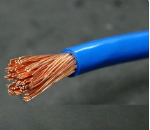
In various bolt connections, washers are indispensable fastening elements, among which flat washers and spring washers are the two most common types. The purpose of this article is to deeply analyze the application scenarios and advantages of these two types of washers, in order to help engineers and enthusiasts better understand their uses.
Flat Washers
A flat washer is a basic type of washer that is widely used in various fastening connections. Its main function is to increase the contact area, reduce friction damage, and distribute pressure, thereby protecting the connected parts. The advantage of a flat washer lies in its simplicity and ease of use, usually used in conjunction with nuts, and is suitable for the following situations:
- 1. Bolts that require frequent disassembly: Flat washers are easy to disassemble and reassemble, suitable for connections that require frequent maintenance.
- 2. High-strength bolts and low-pressure stress joints: When the bolt has high strength but the joint承受的 pressure stress is low, flat washers help to reduce the pressure stress on the joint.
- 3. Hole alignment adjustment: When the bolt holes are out of standard requirements, additional flat washers can be used to compensate for the positional deviation of the holes, ensuring the alignment of the connected parts.
-
4. Installation position adjustment: In situations where the installation position of the workpiece needs to be adjusted, flexible installation adjustments can be achieved by using through holes combined with thick flat washers or special washers.
Spring Washers
Compared to flat washers, spring washers have better anti-loosening and anti-vibration capabilities. They are usually used in situations where the tightening force requirements are not high and the joints承受 dynamic loads are small. Here are some applicable scenarios for spring washers: - 5. Anti-loosening requirement: Spring washers generate elastic resistance after tightening, keeping the threads compressed, effectively preventing loosening.
-
6. Stress relaxation relief: When the clamping length of the bolt is short and stress relaxation is significant, spring washers can provide additional tightening force. In situations with large dynamic loads or vibration resistance, combining flat washers and spring washers is a good choice, allowing the benefits of both types of washers to be enjoyed.
Cases of Not Using Washers
Although washers are essential in most cases, there are specific situations where they may not be necessary: - 7. Shear connections: For connections subjected to shear forces, such as bolted hinge joints, washers may not be needed because there is no gap between the bolt shank and the hole wall, and the contact surface is compressed.
- 8. Flange connections: When using flange nuts or bolts, since the pressure-bearing area is large, washers are not necessary. In summary, choosing the correct type of washer and understanding its role in various connections is crucial. Flat washers and spring washers each have their advantages, and engineers should choose the appropriate type based on the specific application scenario and requirements. In some cases, it may even be considered to not use washers to ensure that the connection is both safe and efficient. By doing so, the design potential of the fastening system can be maximized while ensuring long-term reliability.





 Customer service 1
Customer service 1  Customer service 2
Customer service 2